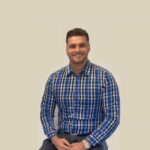
What is business to business financing (B2B finance) and how does it work?
B2B financing refers to financing that is available to companies who work mostly with other businesses.
This includes traditional bank loans and various funding and credit tools offered by various lenders.
We can get you approved for a business loan online below:
How do business-to-business loans work?
New financial players are constantly emerging in the B2C and B2B markets due to technological innovation and regulatory policies like Open Banking. You can provide financial services directly to your clients via embedded financing.
B2B financing has many distinct features that set it apart from B2C financing. These include the need for invoice financing and a higher amount of finance.
There are many reasons why you might need to pay for payroll, technology investment, inventory or insurance.
Banks are the best place to enquire about small business loans or where you can borrow money.
It might be challenging to know that many companies in this industry specialise in lending money. Asset finance and bridging loans are popular options.
Once you have spoken with a lender think carefully before securing a loan. Ensure you can make the monthly repayments on a mortgage.
Start your application below now online:
What is B2B lending?
This transaction allows new businesses to receive funding and financial support from larger and more established companies.
The B2B lending model allows small businesses to borrow less money than they would if they borrowed money from a bank.
Larger businesses can decide when and how the funding should be returned on a case-by-case basis.
Businesses can choose to be the borrower or the lender and have the freedom to set their own terms.
B2B Financing from Alternative Lenders: Benefits
Every financing solution for B2B has its own characteristics, and there are three main advantages to using alternative lenders instead of banks.
Access to capital
Banks often require large amounts of supporting information and lengthy processes to comply with strict regulations when applying for business loans.
It can take time to wait for approval, which can pose a problem for the customer and their business.
Technology has provided new financial options for B2B businesses. These services are often more targeted toward B2B companies than those offered by banks.
Alternative lenders regulated by the FCA are often approved at a higher rate than traditional banks.
Speed
Alternative lenders regulated by the FCA approve more businesses and often do so faster than banks.
Alternative lenders rely on different processes than banks to confirm funding decisions.
They can use online data and processes to act faster than traditional methods used by banks.
Other investors, such as angel investors can help if you are looking away from mainstream lenders and require something more bespoke.
Different types of B2B financing
Here is a list listing the most common financing types available to companies in the B2B sector.
Business loans
SMEs in expansion or early stages of their development are mainly able to benefit from business loans.
Companies often need to meet specific requirements to qualify for a business loan. These include creditworthiness, turnover, company age, and so forth.
Banks have more stringent requirements than other lenders.
Different loan providers specialise in different types. There may be different types depending on the size of your company (SMEs, startups or larger corporations, etc.). and the timeframes for lending.
It is important to consider whether business loans are good or poor debt. These loans can be used to support a failing company or boost growth and lenders will be keen to distinguish between the two.
B2B lending
In recent years, B2B lending to alternative providers has advanced significantly. The process has evolved from being digitised (thereby making it more accessible) to more complicated solutions using online data instead of traditional asset underwriting metrics.
Non-bank lenders often offer value-added services. These services include the less visible benefits of working with clients and networks that are similar to yours.
C2FO, Fundera and Kabbage are all well-known B2B lenders.
Line of credit
A line of credit is sometimes called a “revolving credit facility” and it’s when a business (usually small) has a predetermined credit line with a third-party provider.
This amount, unlike a business loan, is not paid upfront. It is available whenever it is needed. In addition to repaying the borrowed amount, you will also have to pay interest at a pre-agreed rate. It’s almost like a business credit card.
A line of credit is more flexible than a business loan. This is especially useful for businesses that aren’t sure what costs they might need to cover.
Venture debt
Venture debt is a form of debt financing in which lenders use the borrower’s most recent venture capital equity rounds as a measure to determine the terms. This type of debt financing is targeted at startups and young companies with high growth.
The size of the venture debt is determined by the figures from the latest round of venture capital equity.
Net 30 terms
Net terms are also known as credit terms or trade credit. They are a grace or delayed period that companies have to pay for goods and services.
Net terms are typically given for periods of 30, 60, or 90 days. They are also known as net-30 or net-60 or net-90. In B2B transactions, their availability is often assumed to be a given.
Invoice discounting
Invoice discounting refers to when a company borrows the majority of their unpaid invoices from another party. These invoices serve as collateral for business loans.
Invoice discounting has the main advantage of boosting cash flow quickly. This arrangement is usually not known by clients who pay the invoices.
Invoice factoring
Invoice financing also uses invoices in order to secure cash flow. This is done by effectively using invoices as collateral that the factor (the invoice factoring provider) covers as soon as the invoice has been issued. Invoice finance is similar to cash flow finance offered by specialist lenders.
This is similar to invoice discounting, except that the client pays the factor directly.
The factor also offers other services, including collections and monitoring to see which invoices have been paid. This saves time and money for the company.
Embedded B2B Financing: Offer financial services to clients
Modern business requires embedded payments and finance.
Customers in the business world expect frictionless purchases and seamless payments at all levels, from B2C to C.
Embedded payments
Embedded payments refer to the fast-growing trend of integrating payments into existing processes.
The less friction felt by the user, the more integrated the payments. This increases the chances of making immediate and return purchases.
Embedded payment is similar to invisible payments in that users don’t need to confirm payment when they make a purchase.
The most famous examples of embedded payments are the Uber experience and checkout-less Amazon Go shops.
Embedded finance
Embedded Finance is “The use of financial tools and services, such as loan processing or payment processing, provided by a nonfinancial provider.”
B2B service providers eliminate the need for customers to search and sign up with third parties by offering direct finance.
Providing financing solutions for B2B clients will ensure strong cash flow. This ultimately supports sales and creates positive trading conditions, and is similar to embedded payments. The more seamlessly this can be achieved, the better.
B2b finance final overview and how to get approved
B2B companies have the option of a variety of financing options, including traditional and increasingly alternative lenders.
For new businesses, business loans are particularly popular. Many options are available, including a line of credit, venture debt and invoice financing (including invoice discounting or invoice factoring), offer more flexible and innovative solutions.
There are often significant differences between the options offered by traditional banks and those provided by alternative providers.
Banks are more likely to use older technology, leading to slower decision-making and a more cautious approach to risk.
Alternative providers, or non-bank lenders, often use modern technology to evaluate applications using additional data points quickly. This can often lead to faster approval rates and quicker processes.
Companies can offer embedded financing solutions as well as embedded payments.
High growth in fintech is driving innovation. This presents a problem for businesses looking to capitalise on it: too many options.
Start your business loan application below now online:

